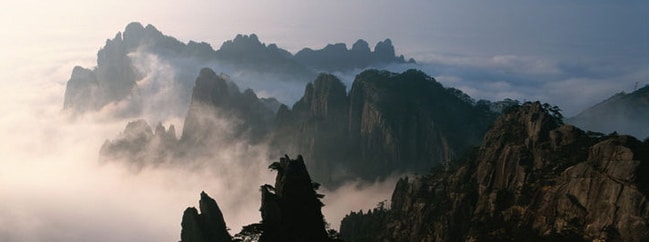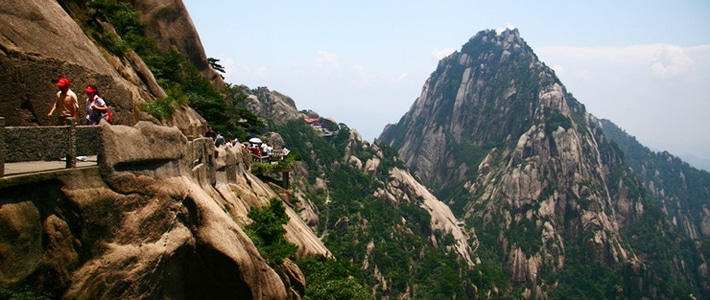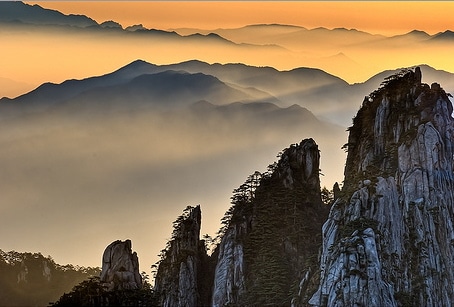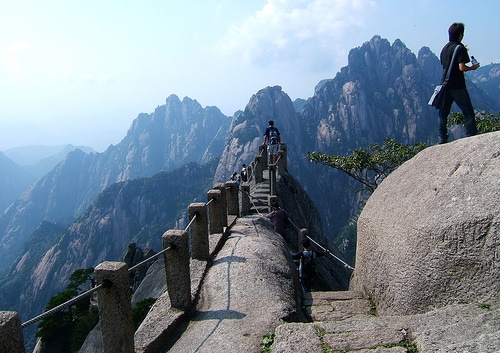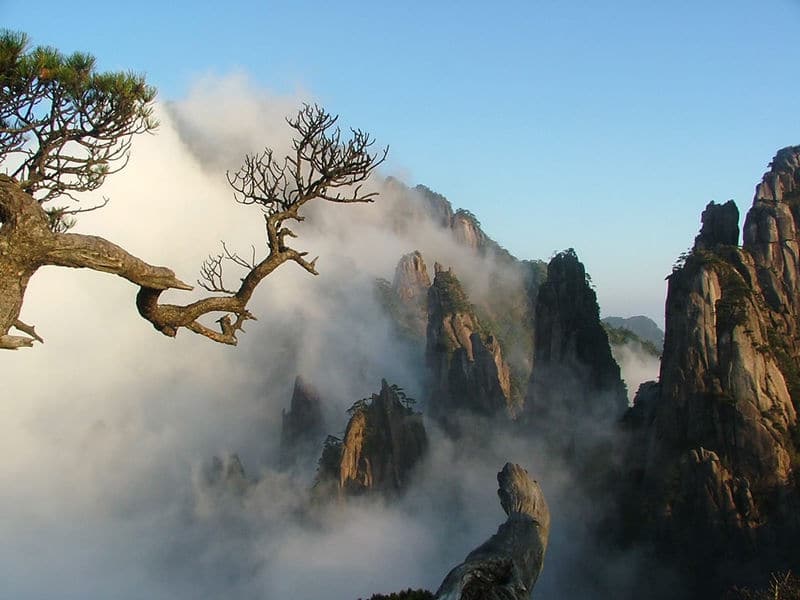The Chinese say that once you’ve ascended the peaks of Huangshan, you’ll never want to climb another mountain. And although they may not be China’s most sacred mountains, the Huangshan mountains are arguably the most beautiful and a must-see attraction if you’re anywhere close to the area.
If the mist-wreathed granite peaks, bamboo forests, and twisted pines perched on jutting crags look familiar, it’s because the breathtaking beauty of Huangshan has been immortalized in countless Chinese scroll paintings and movies. In fact, parts of the movie “Crouching Tiger, Hidden Dragon” were filmed here.
Because the mountainous weather is hit-or-miss any time of year (views often blocked by thick fog), your best bet is to budget at least a few days of exploring and hiking Huangshan to maximize your chances of clear weather. But don’t worry—there are plenty of spectacular hikes around the 72 sheer rock cliffs, not to mention the famed Huangshan sunrise that’s definitely worth dragging yourself out of bed for.
Since Huangshan is a top tourist attraction and popular travel destination for the Chinese, book ahead, especially on summer weekends.
History of Huangshan
A UNESCO World Heritage Site since 1990, Huangshan is in the Anhui province, eastern China’s most rural province. But what the province lacks in wealth, it more than makes up for in natural beauty.
Once known as the Black Mountains, a Tang Dynasty emperor renamed it to honor the Yellow Emperor Huangdi, who according to legend, rode off from their peaks to heaven on the back of a dragon. Huangshan literally translates to “Yellow Mountain,” which is bit misleading since it’s not a solitary mountain but a long mountain range that extends across four counties.
Again, it’s worth staying at least one night on the mountain just to see the sunrise, which is visible from several places on the mountain. The most popular spot to catch the sunrise is the Dawn Pavilion, near the Beihai Hotel. If big crowds spoil it for you, travel a bit farther from the hotels to Refreshing Terrace, Lion Peak, or Red Cloud Peak.
Hiking the Huangshan mountains is straightforward and the paths are easy to follow so you won’t need to join a tour—just buy a map from a local vendor. Also, no need to hire a porter either—you can store your luggage in either Tangkou or Taiping so just bring a day pack, good shoes, a waterproof jacket, and warm clothes for the higher elevations.
Accessing Huangshan:
The hiking trail is divided into eastern and western steps (sometimes referred to as southern steps). The eastern steps (4.5 mile/7.5km) is shorter and easier than west (9m/15km). But the scenery on the steep and windy western steps is considerably better. My recommendation? Hike up by the eastern steps and then descend by western steps.
The hike is fairly strenuous so if you’re not in decent shape (or are short on time), you can always take one of three cable cars up the mountain, the preferred method for many Chinese tourists.
Lines for the cable cars can be long though so best to go early or avoid the weekends (much less of a wait to descend). Tangkou is starting point for two hiking trails and parallel cable cars. A third cable car can be accessed from Taiping.
When to Visit Huangshan
It is worth visiting Huangshan all year round. In fact, regardless of the season you’re in, you won’t regret visiting this beautiful and picturesque city!
Located in the subtropics, the city has a typical subtropical monsoon humid climate. It is clearly divided into four seasons with short spring and autumn while long summer and winter. The comfortable weather allows for good opportunities to travel to the city and its stunning scenery/atmosphere throughout the year.

